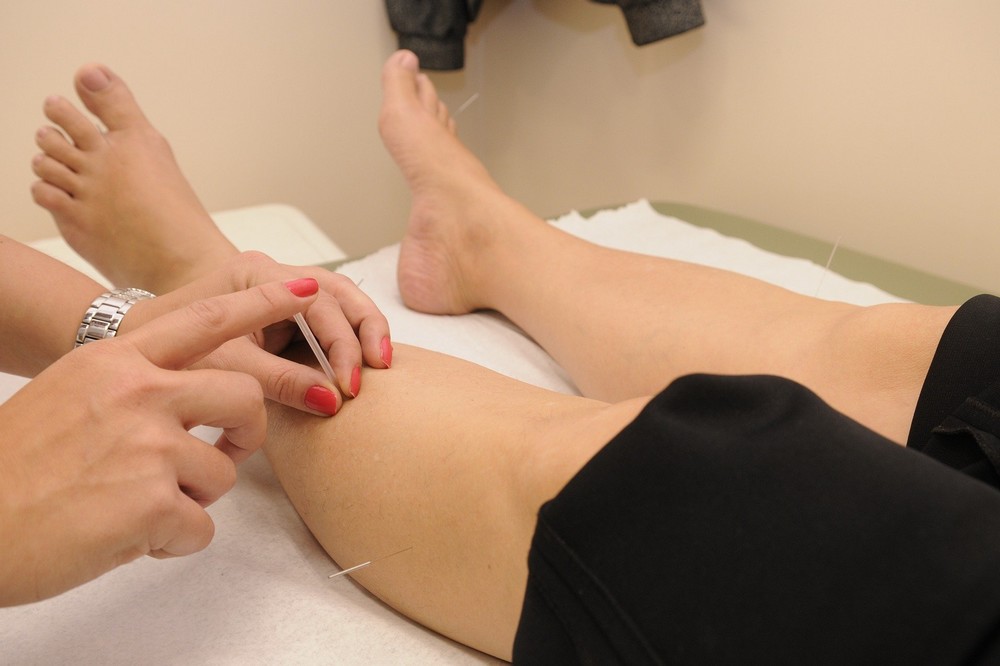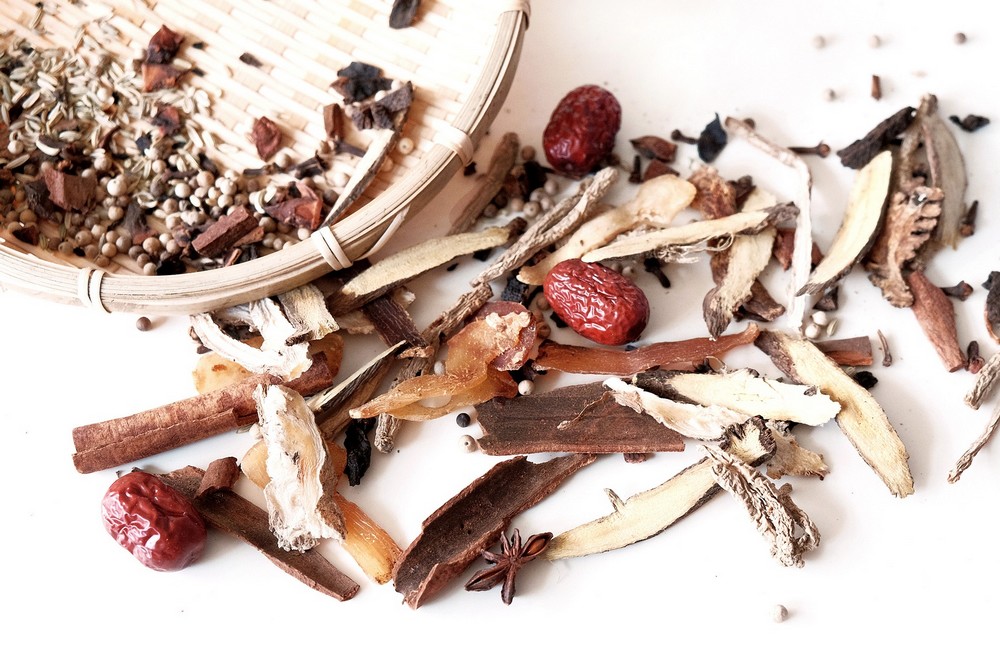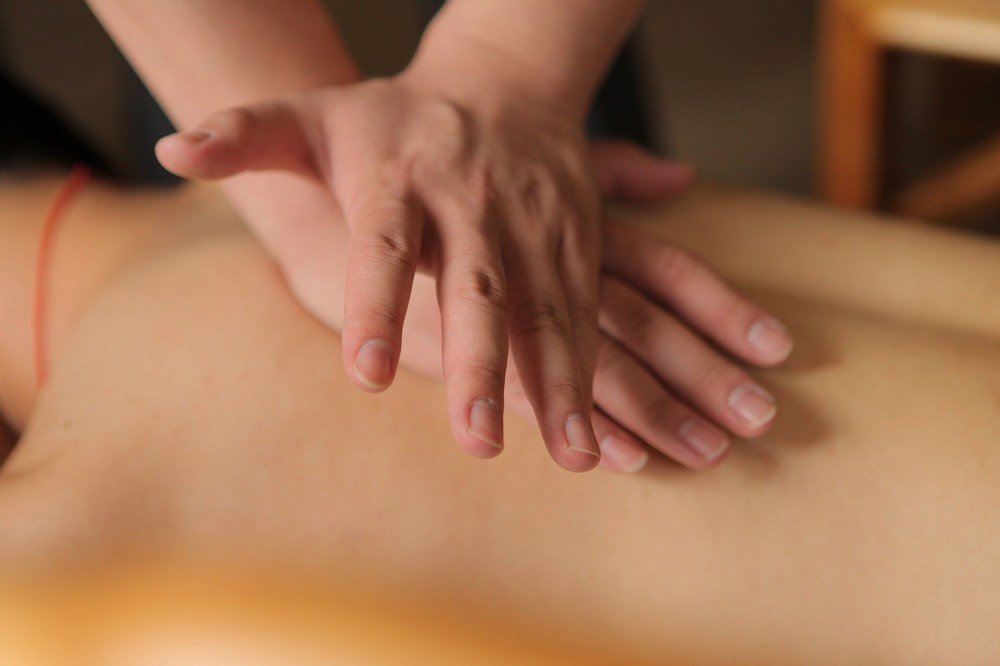Traditional Chinese Medicine for Fibromyalgia
How Traditional Chinese Medicine for Fibromyalgia can ease the symptoms. How using TCM techniques can overcome pain, fatigue, depression, anxiety and other symptoms of Fibromyalgia.
There are five practices that make up Traditional Chinese Medicine – these are acupuncture, diet, herbal medicine, Qigong movement and massage. All these practices are aimed at preventing or treating health problems including Fibromyalgia.
No strong drugs with nasty side effects are used in TCM – just natural herbs, nourishing foods, and gentle healing movement, various forms of massage and acupuncture or acupressure to get the blood, Qi and lymphatic system working properly. Being treated by Traditional Chinese Medicine can restore or improve your health in ways unheard of in Western medicine.
Western medicine cannot treat and certainly cannot cure Fibromyalgia. I quote from the NHS website "There's currently no cure for fibromyalgia."
Western Medicine vs Traditional Chinese Medicine for Fibromyalgia
Traditional Chinese Medicine (TCM) has a different approach to conventional Western medicine. In Western medicine the body is studied, diagnosed and treated as completely separate entities. If you have problems with your heart you will see a heart specialist, if you have problems with your kidneys you will see a kidney specialist, if you have problems with periods, pregnancy or menopause you will see a gynaecologist and if you have problems with your ears you will see an ENT specialist.
Traditional Chinese Medicine does not separate the body but treats it as a whole. EVERY ailment is looked at holistically. This is of course extremely important for people with Fibromyalgia. Typically a Fibromyalgia sufferer will have to visit their GP many times for the many and varied symptoms they endure. Many people with Fibromyalgia have seemingly unrelated symptoms in excess of 30.
For example a painful jaw will require one visit to the GP with a possible referral to a maxillofacial specialist and a subsequent diagnosis of TMJ. A seemingly unrelated ailment maybe painful wrists warranting another visit to the GP where an X Ray maybe ordered, steroid injections made and a referral to an orthopaedic hand specialist where a diagnosis of Carpal Tunnel Syndrome is made.
A very common complaint endured by people with Fibromyalgia is foot pain which warrants yet another separate visit to the GP. Again X Rays maybe ordered and a referral to a podiatrist with a diagnosis of Plantar Fasciitis.
So for just 3 separate symptoms of jaw pain, wrist pain and foot pain there needs to be many GP visits, clinic and hospital appointments over many weeks and more likely months. All 3 ailments cause considerable pain, limit movement, mobility or dexterity and add to the emotional and mental distress of daily living with an “incurable” chronic illness. Any pain medications prescribed will have considerable and often unbearable side effects.
And all 3 diagnoses of TMJ, Carpal Tunnel Syndrome and Plantar Fasciitis cannot be “cured” by Western medicine. So this is why
Traditional Chinese Medicine for Fibromyalgia
is ideal for all of us dealing with the many symptoms.
The Treament of Traditional Chinese Medicine for Fibromyalgia
During an initial consultation with a Traditional Chinese Medicine practitioner they will use a wide range of methods to assess the overall health of a patient. They will look closely at the appearance of the tongue, the eyes and the ears. They will note how the patient moves their body, observe their mannerisms and listen to how they talk.
They will take the pulse of a patient in more than one place of the body.
And finally they will ask numerous questions about the health history of a patient and take into account ALL of their symptoms.
After this initial consultation they can make recommendations of how the patient should be treated and this may involve all five practices that make up Traditional Chinese Medicine – acupuncture, diet, herbal medicine, Qigong movement and massage.
Here in the UK you can find a Traditional Chinese Medicine
practitioner.
Acupuncture for Fibromyalgia

The aim of acupuncture from a Traditional Chinese Medicine viewpoint is to allow Qi or energy to flow freely throughout the 12 invisible channels known as meridians.
If the meridians become blocked or impeded then this cause imbalances in the body leading to pain, fatigue, anxiety, depression and many other symptoms associated with Fibromyalgia. So again Traditional Chinese Medicine for Fibromyalgia is ideal for us.
Diet for Fibromyalgia

The Traditional Chinese Medicine approach to diet for the maintenance of good health is to eat seasonal, locally grown organic food. Temperature of food is important too.
For example warming and nourishing soups should be eaten in the winter, whereas cooling salads should be reserved for the hot summer months.
Herbal Medicine for Fibromyalgia

One strand of Traditional Chinese Medicine is that of herbal remedies. Herbs, roots, barks, flowers and leaves of plants are used to create teas, tinctures, dried powders or liquid extracts.
A prescription of a combination of herbs is put together for an individual rather than for a particular illness or disease. So all symptoms presented to a Traditional Chinese Medicine practitioner by an individual will be assessed and a herbal formula of several ingredients recommended for that particular individual. If you want to try Traditional Chinese Medicine for Fibromyalgia then seek out an expert in this field.
Qigong for Fibromyalgia

I can best describe Qigong as mindful movement medicine. It is the healing form of Tai Chi and involves purposeful breathing and gentle simple movements.
Qigong, as part of Traditional Chinese Medicine has been around for 5,000 years and the breathing, movements and postures were designed to move Qi, blood and the lymph around the body.
Chinese Massage for Fibromyalgia

There are a few elements of Chinese massage and these include Tui Na, Gua Sha and Cupping therapy.
Tui Na massage, sometimes spelt as Tuina is translated as “push and grasp”. It is a healing and therapeutic form of massage that has been used in China for more than 5,000 years. Having a Tui Na massage removes blockages, relieves pain and releases stress by the application of gentle pressure applied to the acupressure points, energy channels called meridians, muscles, tendons and nerves. The aim of the Tui Na massage is to allow Qi to be balanced and flow freely and smoothly which allows healing to occur.
Gua Sha is a Traditional Chinese Medicine method of using a tool to scrape or rub along the skin to relieve pain and release tension in painful fascia, connective tissues and stiff muscles.
Cupping therapy is an integral part of Traditional Chinese Medicine. Cupping practitioners place warmed or heated glass, plastic or silicone cups onto the skin and a vacuum is formed allowing the skin to be lifted from the fascia tissues. Cupping is traditionally used for muscle and joint pain, skin conditions and respiratory problems. It is also helps with anxiety and depression.
Find out more about Chinese Massage
Discover more about Cupping Therapy
Learn more about Gua Sha
My experience of Traditional Chinese Medicine for Fibromyalgia
I was introduced to Traditional Chinese Medicine for Fibromyalgia symptoms in a couple of ways.
Qigong
Firstly I took an interest in Qigong which is a gentle healing form of movement as an alternative to Yoga. I wanted some form of exercise that I could do that would not exhaust me and make me feel better. The more I looked into Qigong the more it seemed to be the perfect form of exercise for Fibromyalgia.
I did not want to join a group class for any form of exercise as that would be just too stressful form me. Going out, travelling to a venue and joining a class full of other people perhaps once or twice a week would be impossible for me. I would become too stressed by a situation with lots of people and new unfamiliar surroundings. Suffering from Fibromyalgia means you are in a constant state of stress anyway and adding to it just made my symptoms of pain, fatigue and depression much worse.
So I started practising Qigong from watching YouTube videos. I soon developed a taste for it as it was very simple to do as it involved repetitive movements that were very easy to follow. No special equipment or clothing is necessary and you can practice it with limited space. The other thing I liked about Qigong was all the movements could be carried out standing (or sitting if standing is a problem) which is unlike Yoga, where you need to get down on the floor and get into difficult postures. Qigong is easier than Tai Chi too. With Tai Chi you need to learn a series of movement that flow from one to another, whereas Qigong is separate easy movements. And because the Qigong movements are so simple, easy to learn and repetitive you naturally go into a meditative state.
But the main thing I loved about Qigong was how it made me feel. After my daily sessions I felt better than I had in years. I had more energy and was less fatigued, my pains lessened and my mood lifted. I found the more Qigong I did the better I felt.
I soon realised that Qigong was designed to heal and treat the body with movements that use every muscle of the body and allow the blood and lymphatic system to circulate and flow freely. It also aimed to allow the Qi or sometimes spelt as Chi – the name given by the Chinese for life energy or life force – to flow freely. Qi should flow smoothly and unimpeded throughout the body like a stream, through the meridians or energy channels that connect all vital organs.
In Traditional Chinese Medicine stagnant Qi is caused by stress and anxiety. And of course stress and anxiety causes and contributes to Fibromyalgia. People with Fibromyalgia are under constant stress due to the fight or flight mode always being on high alert.
So it seems obvious that in people with Fibromyalgia their Qi will be blocked or stagnated. And in Traditional Chinese Medicine Qi stagnation causes an imbalance of Yin and Yang. Yin and Yang are two sides of opposite but complementary energy forces that make up a balanced whole. In Traditional Chinese Medicine striving for balanced Qi energy between Yin and Yang is paramount for good physical and mental health. An imbalance can in turn cause Yin deficiency or Yang deficiency.
Both Yin deficiency and/or Yang deficiency leads to numerous physical and mental ailments. These include the many Fibromyalgia symptoms of fatigue, muscle aches and pains, insomnia, night sweats, poor sleep, poor digestion, poor memory, cold intolerance, cold extremities, anxiety, depression and lack of motivation.
Most people with Fibromyalgia will have both a Yang deficiency and also a Yin deficiency.
Chinese Massage
The second thing that interested me about Traditional Chinese Medicine was Chinese Massage. There are a number of treatments that I have put under the umbrella term of Chinese medicine massage and these are Tui Na, Gua Sha, Cupping therapy and Fire Cupping.
After receiving numerous and very regular hands on treatments from both my Physiotherapist and my massage therapist such as myofascial release, cupping, vibrational massages, deep tissue massages and hot stone massages to help relieve my very stiff and very painful muscles and tendons throughout my body, I knew the benefits of massage. After any type of massage I received I always felt better but the effects did not last long. My muscles would tighten up again in a matter of days and I would wake up as stiff as a board and in dreadful Fibromyalgia pain.
I went on a Greek island holiday and whilst there had a couple of deep tissue massages. The massage therapists could not understand why I was so stiff, knotted and tense in my muscles. They worked very hard to try to give me some relief.
But it was whilst sunbathing on the beach that I saw a Chinese masseur giving a holidaymaker a massage on a sun bed. When the masseur finished with her client I asked her to give me a whole body massage. She spent a full 75 minutes giving me, what I now know was a Tui Na massage. It was sensational and made me feel wonderful. I arranged a further 2 massages with her before my holiday finished.
When I returned from holiday, serendipitously my usual Physiotherapist had the left the practice I attended. So an appointment was made with a different Physiotherapist.
I got onto the massage bed and the new Physiotherapist proceeded to give me Tui Na massage. She explained although she traditionally trained as a Physiotherapist with Western medicine she was now learning and practising with Traditional Chinese Medicine techniques and getting very good results for her clients. She asked if I wanted to go down the Traditional Chinese Medicine route with a mix of cupping, Tui Na massage and acupuncture. I agreed. As she was very busy and had to limit my appointments to once a fortnight she recommended I see another acupuncturist and Tui Na masseur in between appointments. I found the perfect Traditional Chinese Medicine practitioner who not only offered Tui Na massages and acupuncture but also fire cupping, moxibustion and herbal recommendations.
I strongly urge anyone with Fibromyalgia to go down the Traditional Chinese Medicine (TCM) route. Find a good Traditional Chinese Medicine practitioner who can at the very least give you acupuncture treatments and Tui Na massages.